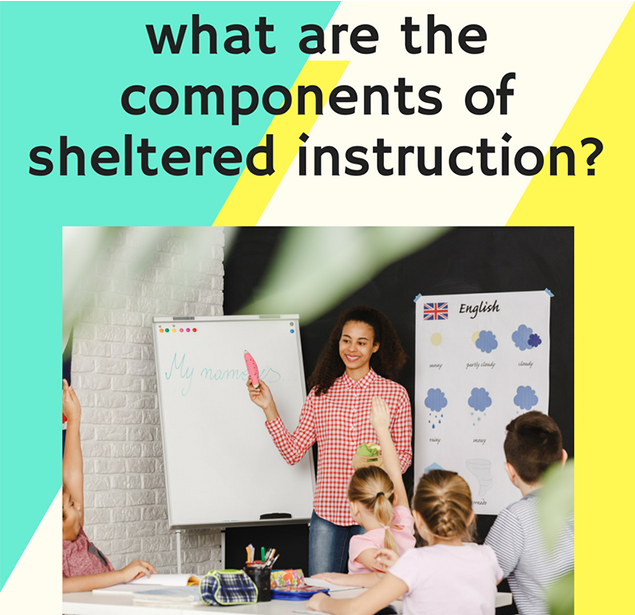Components of Sheltered Instruction
Posted by Network Support · Leave a Comment
Components of Sheltered Instruction
It is not uncommon to see one or more English language learners (ELL) in the class. To help them learn, teachers often use the Sheltered Instruction model, a teaching method that simplifies content to make it more comprehensible for ELLs. The instruction model aims at helping ELLs develop academic skills, proficiency in English language and mainstream grade level content-area knowledge. This is attained through its eight components which are:
Preparation:
In lesson preparation teachers may:
- Plan and structure lessons in a way that helps students make connections between existing knowledge and new information. This includes planning for learning activities to help students establish the connections.
- Clearly state content (what students will learn) and language (how students will learn) objectives and ensure that they align with any education standards.
- Plan for incorporating supplemental materials like graphic organizers, multimedia, and illustrations to help students understand the content.
Building Background:
To meet this component, teachers can try to help students establish connections between the concept and their background experience, and past knowledge as it aids comprehension. To establish these connections teachers can:
- Learn about ELL students and their backgrounds through conversations, and by engaging in various activities.
- Build student’s vocabulary – both content-specific and overall.
Comprehensible Input:
Teachers will need to present information in ways that facilitate comprehension. For this, teachers must modulate their linguistic input by:
- Speaking clearly, slowly and in short sentences.
- Using pauses and simple language (few pronouns, syntax), and avoiding jargon and idioms.
- Using examples and descriptions instead of definitions to explain concepts.
- Supplementing input through visual aids and gestures.
- Providing students with time to process information and to ask for clarifications.
Strategies:
Students are taught different meta-cognitive, cognitive and social strategies to help them learn. Teachers can make this simple for all students by:
- Using clear instructions to model the use of strategies, like think-aloud exercises, summarization, elaboration and questioning in learning.
- Providing students with opportunities and time to practice and apply the strategies.
- Slowly withdrawing assistance depending on the ability of students to independently apply the strategies for learning.
Interaction:
Sheltered lessons encourage the use of group work (paired or small group) so that ELL students can interact with peers. Engaging in conversations with their peers allows ELL students to have:
- Real and purposeful dialogues.
- Practice in various conversational tasks such turn taking, clarifying, questioning and debating.
- Improved language fluency.
Practice and Application:
Students are given ample hands-on opportunities to apply and practice the skills they have learned and acquired. Engaging in class work (reading, writing and speaking) and group work creates a safe environment for practice and reflection. With peer group and teacher feedback, ELL students can continually improve and master their language skills and content knowledge.
Lesson Delivery:
When delivering lessons, teachers can plan for activities that constantly reinforce language and content objectives. To ensure comprehension, teachers should pace their teaching to suit the language abilities of ELL students. Engaging students in meaningful activities during the lesson and effectively delivering the lesson helps to:
- Enhance student understanding of the lesson.
- Increase student participation.
- Improve the quality of student work.
Review and Assessment:
At the end of every lesson, teachers should remember to review:
- Key vocabulary through actions like emphasizing, drawing attention to, or repeating specific words.
- Key content through strategies like chunking and summarizing.
They can also evaluate the students’ language skills and content knowledge using criteria that were established in the preparation phase. However, when assessing for learning, teachers should use a one-on-one continual interaction between student and teacher, as traditional methods may not accurately track students’ learning and growth. Tools like conferences, learning logs, graphic organizers and dictations also provide teachers with a clear picture about students’ development.
Thus, by following the eight components of sheltered instruction model, teachers can help ELL students learn and attain language and content knowledge proficiency.
Like this article for teachers?
Browse the Professional Learning Board COURSE CATALOG to find related online courses for teachers in your state. Professional Learning Board is a leading provider of online professional development classes that teachers use to renew a teaching license or renew a teaching certificate.





